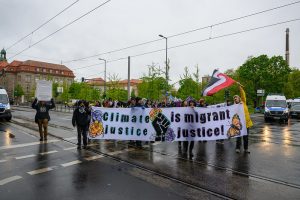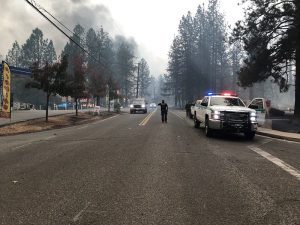As climate change both alters normal environmental conditions and worsens extreme weather, an increasing number of people are forced to move to safer and more habitable areas. Some flee a natural disaster and hope to return home when the area is safer. Some move as changes in climate affect their livelihood, health, or safety permanently. Some who move do so within the area, and some seek refuge across borders. Climate migration is happening in countries around the world, and right here at home, with increasing climate migration in the U.S.
For this post, we’ve collected some personal stories about climate change and migration from climate migrants around the world.

Climate Change and Migration From Mexico and South America
For its Moving Stories report, the Climate and Migration Coalition spoke to people across Latin America whose lives have been impacted by changing climate patterns and extreme weather. Changing rainfall patterns have deeply affected life for communities that rely on personal agriculture. One interviewee, Miguel (45) from Hueyotlipan, Mexico said, “…times have changed…the rain is coming later now, so that we produce less. The only solution is to go away, at least for a while. Each year I’m working for 3 to 5 months in Wyoming.” Lucia Quispe (38) from Khapi, Bolivia said that increased melting snow makes her fear for a time when there “might be no more snow, no more water coming down.” She too worries about how her family will survive if they have problems irrigating their land in the future, saying, “My son would have to leave and go somewhere else, to other countries.”
In Sucre in Colombia, Octavio Rodriquez, who noted unprecedented rainfall and an extended rainy season, spoke powerfully about the pain of being tied to a place that is becoming increasingly inhabitable. “We don’t want to leave our land. Here are our past, our memories, our ancestors. We don’t want to move to other parts. We don’t know what to do there.”
Climate Migrants in the United States
In a 2021 study, 57% of U.S. respondents reported that weather or climate-related events would have a “moderate” or greater influence on their decision to move in the next 10 years. In 2021, The Nation published a story on California residents migrating due to increasingly devastating fire seasons. Some residents, like Steve Smith, left the state entirely. Smith, who had lived in California for over 30 years, said, “I loved living in Oakland…[b]ut it just kept getting harder to live there.” He moved to Washington after the 2020 fire season. Another resident, Virginia Partain, was also pushed out by fire but stayed within California. A former resident of Paradise, Partain was trapped in fleeing traffic “for hours, not knowing if [she was] going to burn to death” as the 2018 Camp Fire ravaged her home. After the fire, she knew she would not go back – “I know it’s going to happen again. I don’t want to be in my 80s and trying to get out,” she said.

Bangladesh Climate Migrants
Bangladesh is extremely vulnerable to climate change, ranking seventh on Germanwatch’s 2021 Global Climate Risk Index. In a moving personal essay for the BBC, British Bangladeshi writer Qasa Alom outlined the threats climate change poses to his ancestral home in Sylhet, Bangladesh. Though their village was named after Alom’s great-great-great-grandfather, his grandmother is the only member of the family who lives there full-time now. Everyone else has emigrated to Europe or North America. Flooding has always existed during monsoon season but an increasingly erratic rainfall pattern means both flash floods and drought are serious concerns for the village. A local friend of Alom’s, Shipu Thakder, explains: “The weather is getting more extreme. It is getting too hot. We don’t understand when there will be rain and when there will be thunderstorms.”
The Future of Climate Migration
It can be difficult to predict the future of climate-related migration, given that it’s often intertwined with other reasons for migration, such as economic factors, conflict, and political instability. While climate migration occurs world-wide, the Migration Policy Institute notes that migration disproportionately happens in lower-income countries. These countries tend to be more vulnerable to the effects of climate change but have often contributed the least to climate emissions.
Climate change affects the habitability of the planet, with some areas being impacted more severely than others. However, environmental degradation affects us all – there is only one Earth and we live increasingly interconnected lives.
Image credits: Protest sign (Climate justice is migrant justice! by Stefan Müller is licensed under CC BY-NC 2.0); Aftermath of 2018 Camp Fire (20181116-FS-LEICampFire-TH-023 by Forest Service, USDA is Public Domain)




